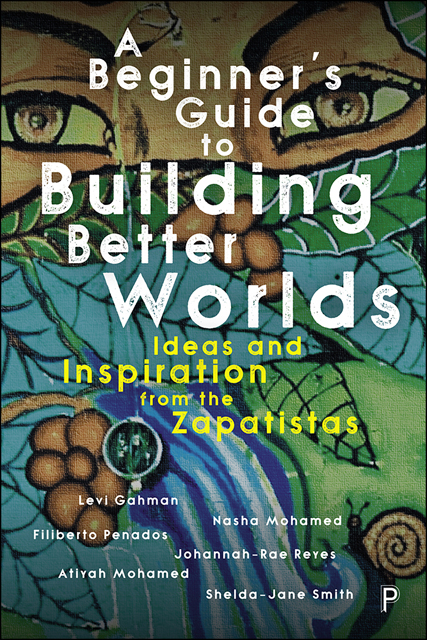Book contents
- Frontmatter
- Dedication
- Contents
- List of figures
- Guilty parties
- 1 Introduction: from liberal bystanding to emancipatory praxis
- 2 A world where many worlds fit
- 3 The coloniser’s model/neoliberal state of the world
- 4 Modernity-coloniality and Indigenous realities
- 5 Dispossession, extractivism and violence
- 6 Critical consciousness and praxis
- 7 Political education and radical pedagogy
- 8 Gender justice and social reproduction
- 9 Health, food sovereignty, solidarity economies
- 10 A battle for the soul of education
- Notes
- References
- Index
2 - A world where many worlds fit
Published online by Cambridge University Press: 13 October 2022
- Frontmatter
- Dedication
- Contents
- List of figures
- Guilty parties
- 1 Introduction: from liberal bystanding to emancipatory praxis
- 2 A world where many worlds fit
- 3 The coloniser’s model/neoliberal state of the world
- 4 Modernity-coloniality and Indigenous realities
- 5 Dispossession, extractivism and violence
- 6 Critical consciousness and praxis
- 7 Political education and radical pedagogy
- 8 Gender justice and social reproduction
- 9 Health, food sovereignty, solidarity economies
- 10 A battle for the soul of education
- Notes
- References
- Index
Summary
We’re sorry for the inconvenience, but this is a revolution.
The EZLNA ‘¡Ya basta!’ heard around the world
The story of the Zapatistas is one of struggle, dignity and hope. It is an ongoing saga of collective resistance to over five hundred years of attempted imperial conquest and accumulation by dispossession justified by the racist denigration of Indigenous people and the repression of rural peasants in their fight for land and freedom. It is also nothing less than a revolutionary and poetic account of liberation, empathy and revolt, a movement characterised as much by pain, adversity and tears as it is by laughter, dancing and dreams. And for people of the Ch’ol, Tseltal, Tsotsil, Tojolabal, Mam and Zoque communities who make the decision to become a Zapatista, it is a story retold, reborn and rekindled each new day, with each new step.
The most well-known aspect of the Zapatista struggle involves the uprising of the EZLN (Ejército Zapatista de Liberación Nacional [Zapatista Army of National Liberation]) led in Chiapas, Mexico on 1 January 1994. At that time, the Zapatista announced themselves as a product of ‘500 years of struggle’, which includes resistance to: enslavement during the Spanish conquest; Spain during Mexican independence; the imperialist aggression of the US; the intervention of the French Empire; and the dictatorship of Porfirio Díaz (EZLN, 1998; Dinerstein, 2015). In sum, the EZLN identified their rebellion as the continuation of a generation’s-long history of resistance to and struggle against dispossession, exploitation and exclusion that can be traced back centuries (Gunderson, 2019). The latest iteration of these things was the 70-year rule of Mexico's Partido Revolucionario Institucional (PRI, Institutional Revolutionary Party) and the ensuing hegemony of neoliberalism.
Appropriately enough, the EZLN introduced themselves in spectacular fashion, by taking up arms against neoliberalism and a corrupt government on the day the North American Free Trade Agreement (NAFTA) went into effect. Their successful insurrection was the result of over a decade of clandestine organising throughout the Lacandon Jungle and Chiapas Highlands. Although they laid siege to capitalism and state power in 1994, the origin of the EZLN dates back to 17 November 1983, when three urban Mestizo and three Indigenous revolutionaries arrived in the mountains of the Mexican southeast to form a guerrilla army.
- Type
- Chapter
- Information
- A Beginner’s Guide to Building Better WorldsIdeas and Inspiration from the Zapatistas, pp. 18 - 32Publisher: Bristol University PressPrint publication year: 2022

